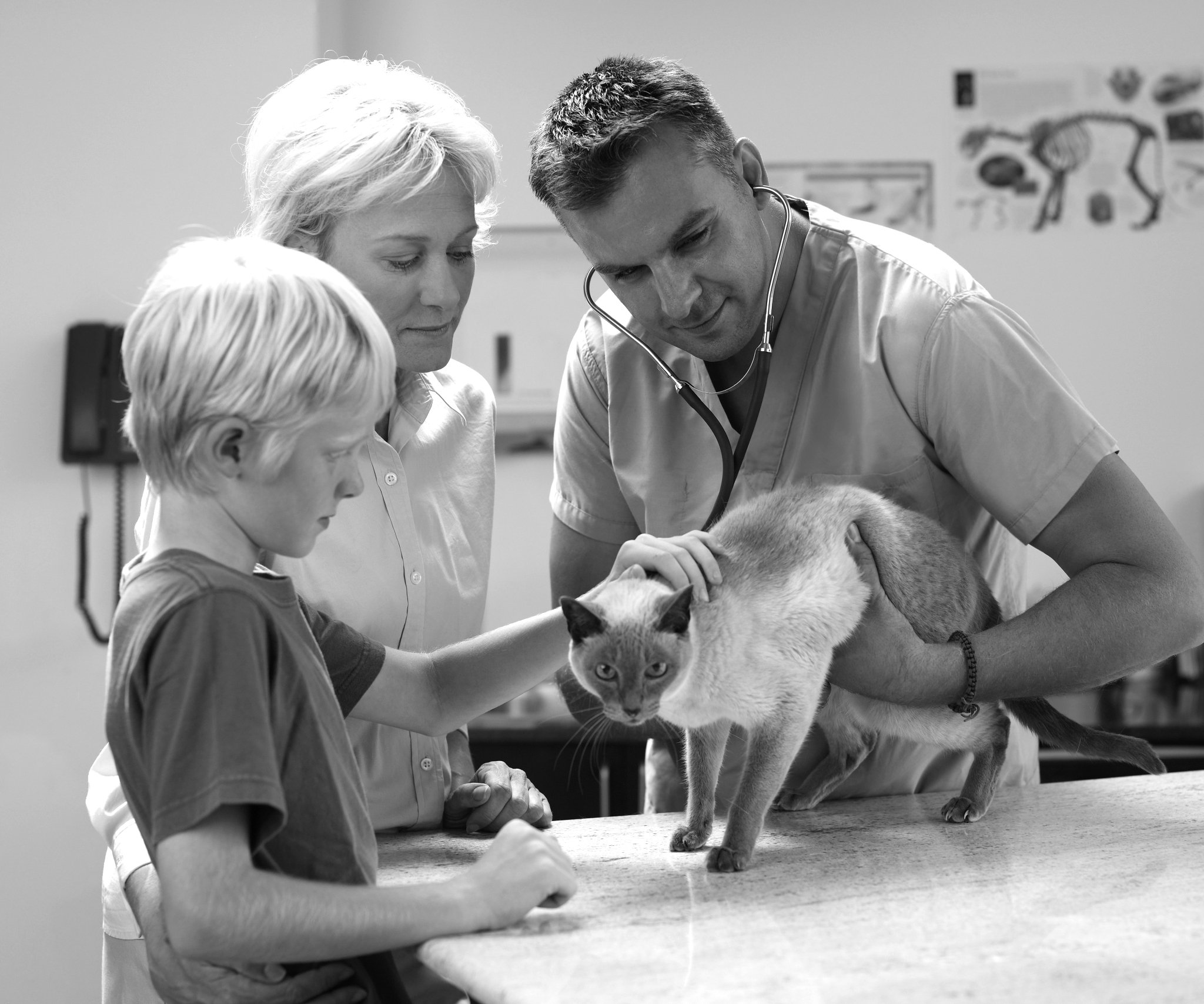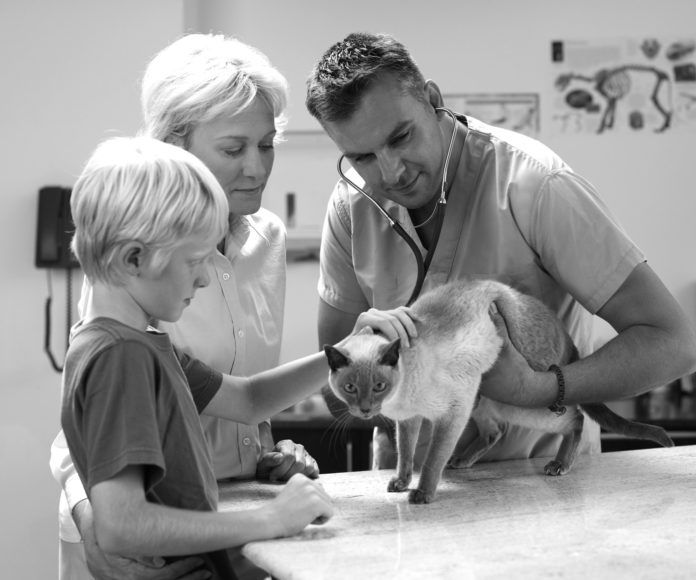Cats with chronic kidney disease (CKD) can feel better, and their disease may progress slower, when owners use veterinarian-recommended nutritional as well as medical therapies. Current research shows that veterinary renal diets can prolong the lives of cats with CKD — although the benefits will vary among individuals.
“The bottom line is that changing cats to a diet with certain properties can help improve outcomes,” says Lisa Freeman, DVM, PhD, a board-certified nutritionist and professor at Cummings School of Veterinary Medicine at Tufts University.
Thinkstock

Chronic Kidney Disease is Common in Cats
Chronic kidney disease is progressive, causing the loss of kidney function over time. It’s also the most common form of kidney disease, affecting about 20 percent of cats. Incidence increases with age: An estimated one-third or more of cats over age 12 have CKD. Stages range from mild (stage 1), when blood values remain within the normal range, to severe disease (stage 4).
CKD is sometimes worsened by underlying conditions, such as urinary tract infections, and some cats may improve when those are treated. Other secondary ailments can also contribute to the cat’s symptoms, including anemia, weight loss or high blood pressure. Additionally, because CKD occurs with increasing frequency in older cats, they often have concurrent diseases complicating treatment, such as hyperthyroidism, cancer, gastrointestinal or heart disease.
CKD progresses differently in individual cats. Nutritional strategies must be tailored to the specific cat, and may need to be modified over time. CKD cannot be cured and may be hard to diagnose early, but it does respond to changes in diet, especially in the early stages.
Cats with Kidney Disease Have Individual Dietary Needs
“There’s a tendency to think a cat with kidney disease only has a single one-diet option,” explains Dr. Freeman. “But you have to look at the individual cat. Every cat is not necessarily best served by the same diet. It’s important to talk to your veterinarian about the optimal diet for your particular cat.”
Cats with CKD vary in weight, degree of muscle loss, blood pressure, and also in protein, phosphorous, potassium and pH/acid levels. These and other nutrients are modified in veterinary renal diets, sold through veterinarians. Although individual products vary, they generally contain less protein, phosphorous and sodium — but also alkalizing agents and more potassium than adult maintenance foods. Some formulations are marketed for different stages of kidney disease.
“We want to avoid too much protein restriction early on because protein restriction can cause muscle loss, impaired immune function, and reduced wound healing,” Dr. Freeman says. “We don’t recommend significant protein restriction until more advanced kidney disease is present. The thinking has changed over the last 10 to 15 years. Now we know that lowering the protein doesn’t slow the progression of kidney disease.”
However, as CKD progresses and becomes more severe, a lower protein diet can help cats to feel better by decreasing the breakdown products of protein in the bloodstream — toxins that make cats feel sick and not eat. Lowering dietary phosphorus can help to slow progression of disease, even if a cat’s blood levels of phosphorus are not yet high.
This occurs primarily by reducing the release of parathyroid hormone that contributes to calcium and phosphorus leaching from bones. Calcium and phosphorus that is lost from bones may be deposited in tissues, including the kidney, which further reduces kidney function.
Blood Pressure and Sodium Levels in Cats with Kidney Disease
Blood pressure can be elevated in cats with kidney disease. Since dietary sodium levels may affect blood pressure, reduced sodium diets are recommended. Potassium — which can be adjusted by diet or with supplements — is also a concern. “Potassium is filtered by the kidneys, and you can have excessive loss of potassium which can contribute to muscle weakness,” Dr. Freeman says. “However, not all cats have low blood levels of potassium, so this should be monitored to determine if a higher potassium content in the diet or a potassium supplement is needed.”
Cats with CKD often have excessive acid in their blood, but veterinary renal diets have more alkaline properties. “Almost all over-the-counter cat foods are acidifying,” says Dr. Freeman. In a cat with CKD, “adding to the body’s acid load is only exacerbating the problem and may contribute to the progression of kidney disease” — further taxing the kidneys, which help regulate acid-alkalinity balance.
Among veterinary renal diets, Dr. Freeman adds, “the products vary in their form, flavor and nutritional profiles, so it’s important to talk to your veterinarian about the specific product or products that are best for your cat.” Kidney diets with adjusted nutrient levels include Hills Prescription Diet g/d and k/d, Purina Veterinary Diets NF, Iams Veterinary Formula™s Multi-Stage Renal Plus™ and Royal Canin Renal LP.
Switch Your Cat’s Food Early
Cats generally benefit from starting a veterinary diet at the earliest stages of CKD. Early clinical signs are subtle — usually drinking and urinating more. As the disease progresses, decreased appetite, weight loss and vomiting are more likely. If owners notice any changes in behavior or body condition, they should contact a veterinarian. Routine blood and urine screening may help to diagnose CKD earlier.
“The goal is to change the cat’s diet as soon as CKD is diagnosed, even if it’s in its earliest stage,” says Dr. Freeman. “However, the diet that is recommended for early disease is often different from that for cats with more advanced CKD. Throughout the course of CKD, it is important to consider the cat’s symptoms, clinical condition and other medical issues to determine which diet or diets are optimal for that cat.”
The International Renal Interest Society staging guidelines suggest specific markers to help diagnose CKD at various stages of progression (stages 1 through 4). Recommendations include serial blood tests to assess blood urea nitrogen (BUN) and serum creatinine concentrations, and urinalyses to detect inadequate urine-concentrating ability and protein in the urine. Blood pressure should also be measured.
Kidneys can work effectively even when one or both are diseased. No changes in urine dilution occur until at least two-thirds of kidney function is lost, and blood changes are not present until three-quarters of kidney function is lost.
Other Ways to Help A Cat with Kidney Disease
In addition to dietary changes, CKD treatment may involve appetite stimulants, acid reducers, anti-nausea drugs, fluid therapy and, as cats eat less, feeding tubes. Increasing fluid intake combats dehydration and can make cats feel better. Some options include feeding canned food, encouraging drinking by providing running water and injecting subcutaneous fluids.
“A cat’s appetite is commonly affected as CKD progresses,” explains Dr. Freeman. “Cats typically have cyclical appetites — they like something one week and then don’t like it, then after awhile go back to liking it again.”
Dr. Freeman suggests “having recommendations for more than one appropriate diet for your cat in the event her appetite decreases. However, it also is important to note that a change in appetite can signal the need for adjustment in medical therapy. For that reason, it’s important to work closely with your veterinarian.”
Dr. Freeman emphasizes that owners need to consider the cat’s “whole diet.” Even if an appropriate veterinary renal diet is being fed, extra protein, phosphorous and sodium may be present in treats and human foods used to administer medication.
Cats with concurrent diseases have especially complex nutritional needs. “For cats with multiple diseases, it can be helpful to work with a board-certified veterinary nutritionist to develop an optimal diet for your cat,” explains Dr. Freeman. “Sometimes we need to find nutritional solutions that help to manage more than one disease. For most cats, this means a veterinary diet — but sometimes we can come up with a very specific over-the-counter (OTC) diet that’s appropriate for that individual.”
Senior Diets are Not Enough for CKD
Don’t assume that OTC senior diets will be appropriate for a cat with CKD, cautions Dr. Freeman. The Association of American Feed Control Officials establishes nutritional guidelines for foods labeled growth (kittens), reproduction (queens) and adult maintenance (cats over one-year-old), but does not set separate standards for “senior” foods.
“Almost always, the therapeutic veterinary diets will have much lower phosphorous and sodium,” says Dr. Freeman, but commercial foods labeled for seniors “can be lower, the same or higher in those nutrients than adult maintenance diets. Therefore, certain senior diets may be appropriate for a cat with CKD while others will have very high phosphorus, protein and sodium levels.”
Dr. Freeman co-authored an article (“Optimal Nutrition for Older Cats” in Compendium: Continuing Education for Veterinarians, May 2011) on a Tufts study of 27 OTC feline diets for seniors which found that calories, protein, fat, sodium and phosphorous content varied greatly among cat foods. Sodium and phosphorous varied more than fivefold.
Many aging cats risk developing CKD, but not all do. That’s one of the reasons why experts recommend twice-annual veterinary examinations for cats over the age of 10, with blood and urine testing at least annually, to evaluate their changing health and dietary needs.




